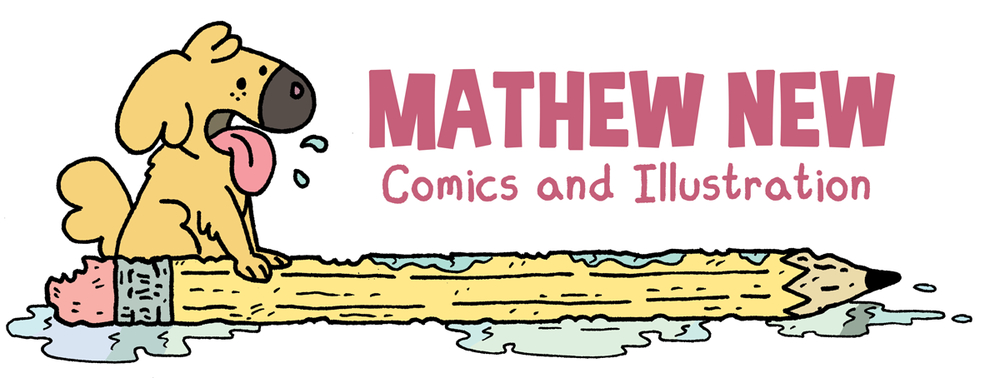It is difficult to talk about Nate Powell's SWALLOW ME WHOLE or ANY EMPIRE without discussing their respective endings. What happens in the conclusions of both stories will likely color readers' ultimate impressions, but I think focusing too much on these final scenes and their dives into surrealism does a disservice to the great moments and insights that come before. I want you to READ these comics, so I'd rather not spoil everything before you have a chance to read them yourselves.
SWALLOW ME WHOLE (2008) is the story of Ruth and Perry, step-siblings navigating their way through their teenage years and also their respective mental and neurological disorders. Perry is fed messages by a wizard pencil topper, convincing him to go on missions, most of which involve rendering time intensive drawings. Ruth obsessively collects (or steals) and organizes mason jars of bugs before she begins hallucinating terrifying swarms of cicadas. The true heart of the story is the relationship between these two step-siblings, as various adults (well-meaning or otherwise) continually fail to adequately help them. They understand each other in a way that no one else is able to.
While Ruth and Perry (for everything they're going through) at least have each other, the same can't really be said for the characters of ANY EMPIRE (2011). A reflection on growing up amid the casual violence and militarism of American culture, our three protagonists are pretty isolated. Lee spends entire pages completely alone, wandering the countryside, suburbs, and construction sites of his southern town. His only friend is Purdy, and their relationship is a fraught and intense one, mostly defined by their convenient location to each other. Both kids are obsessed with military imagery and entertainment: Lee reads GI Joe comics and constantly imagines his soldier action figures fighting valiant battles; Purdy aggrandizes the acts of his father (a member of the National Guard, not a Green Beret like he claims) and spends afternoons browsing the defunct grenades in an army surplus store. Sara exists on the peripheral of the two boys' day-to-day lives, investigating a rash of box turtle mutilations that Lee ends up helping her solve. Even this brief partnership, though, plays out only in notes passed in class. The two do not move toward forming a real connection with each other until much later.
SWALLOW ME WHOLE, after a brief prologue set a couple of years before the main story, mostly focuses on a few months of one school year. Ruth is diagnosed with schizophrenia, while Perry's issues mostly go ignored or are wallpapered over. They begin to drift apart, finding solace in new relationships and experiences, but the danger of what's going on in their minds never really leaves, and, eventually for Ruth, it all comes crashing down. ANY EMPIRE moves backwards and forwards through time, showing how the influences and choices of childhood have ripples well into adulthood. Lee trades in his GI Joe comics for punk music and an aimless twenties and Sara redirects her empathy towards helping children. Purdy joins the military, his life of being both the bully and the bullied continuing almost uninterrupted.
Both SWALLOW ME WHOLE and ANY EMPIRE begin somewhat fairly rooted in reality. There are intrusions of this by the imagined, but there's a clear distinction. As the stories progress, the line between the two becomes increasingly blurred, the walls coming completely down in their finales. Can humans really flip a tank with their bare hands? Does Purdy actually find redemption? For Ruth, what she sees IS REAL to her, and whether her family can see it or not doesn't change that they, too, are affected by it. In that sense, is what happens to Ruth a tragic inevitability or does it, in some way, offer her validation? What is real and what isn't? How important is the answer?
Dialogue is used quite sparingly, and when it does appear it is often naturalistic. There are insightful passages (such as a lovely conversation between Ruth and Perry hanging upside down in a nighttime playground, which is probably my favourite scene outside the climax), but for the most part the story is told through the art.
Nate drenches his work in so much ink that you're almost sure it might still be wet to touch. But he also excels in his use of negative space. He's a master of both, swinging back and forth between airy compositions and oppressive swaths of black. His drawings are both realistic and stylized: highly rendered sketchy lines dissolving into oceans of ink or blank page. Both books take place in the town of Wormwood, Alabama, but it could be anywhere in the South or Mid-West. There's something about his art style that perfectly captures the extremes of hot summers and freezing winters and of growing up conflicted in quote-unquote "Real America." I think I once read someone describe his style as "humid," and I think that about sums it up.
His work is emphatic. He shows what Ruth and Perry are going through, and offers no judgment. He doesn't pretend to know what they should or shouldn't do. In ANY EMPIRE, he isn't just criticizing an element of American culture, he's reflecting on it. He's not treating it as an outsider perspective -- he's as much a part of it as anyone, going so far as to give the character of Lee his own last name.
When it comes to the themes in his work, Nate Powell seems more interested in provoking questions than providing clear answers. You're left to form your own conclusions, which to some might prove frustrating, while others might find the experience illuminating. Either way, you'll be left thinking.

